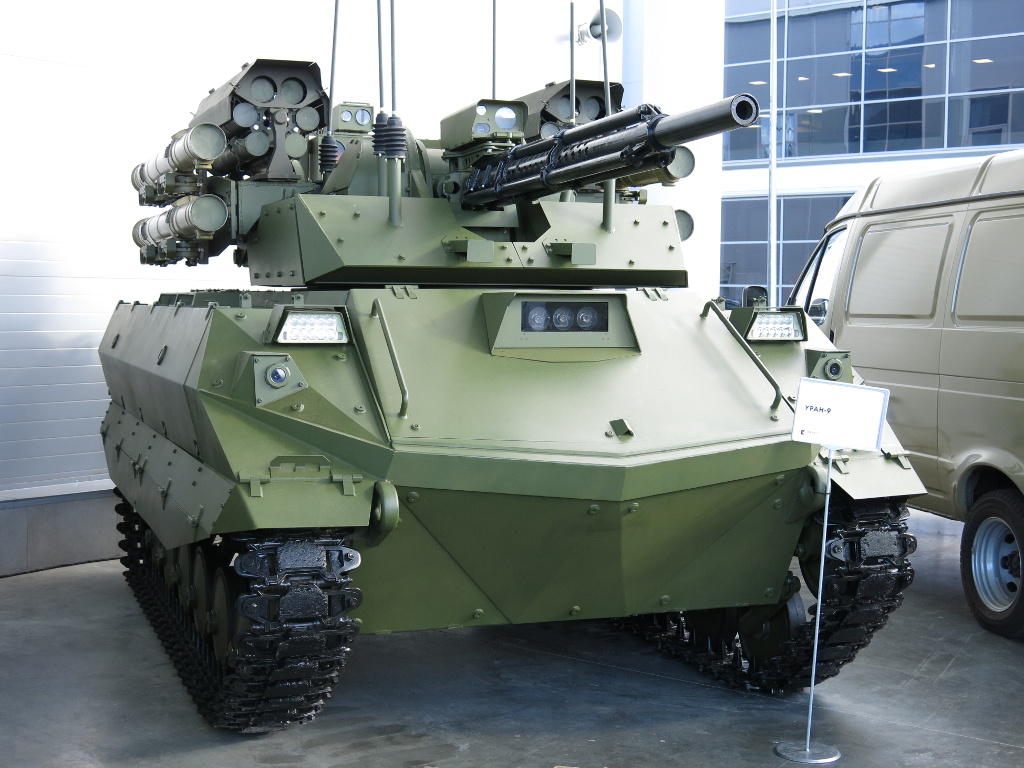This post is also available in:
 עברית (Hebrew)
עברית (Hebrew)
Doctrine for armed uncrewed vehicles working alongside armed humans is still new across the world, and testbeds are a valuable way to explore what, exactly, is the most effective way to apply that combination to battlefield objectives.
Russia’s Marker unmanned ground vehicle, demonstrated in early winter 2019, functions as a transitional vehicle, the machine through which Russia’s military will develop its future combined arms incorporating robots. Developed by the Advanced Research Foundation, the vehicle is explicitly designed as a testbed for future explorations, rather than an operational and deployable model.
What we know of Marker so far comes from a winter demonstration, where the Marker’s turret followed the direction of a soldier as they pointed a rifle at targets. Following human-directed targeting in this way is interesting, though perhaps of somewhat limited utility if both the robot and the human controller cannot see the target. Autonomous capabilities would likely change that, according to c4isrnet.com.
“The Russian military doctrine with respect to UGVs is still under development,” said Samuel Bendett, an adviser at the Center for Naval Analyses. “That is, we know that some models may be used for breaching ops, others for guard duties, others for swarming tactics or demining operations, but we don’t yet have the same view as with UAVs — today, the Ministry of Defense is talking publicly about how its UAVs are used, where and for what reason.”
“If Marker is built to function in different environments, then actual shooting tests — especially with soldiers in a Manned-Unmanned-Teaming arrangement — become key,” said Bendett.
Before the shooting tests, Marker was run through multiple terrain tests, using both tracked and wheeled variants. Russia has also already tried some on-hand field learning with other uncrewed ground vehicles.
In June, Russia arms makers showed off a series of uncrewed vehicles, boasting of the lessons learned in conflicts abroad. For a ground combat robot like the Uran-9, which was impressive in demonstration and less so in the field, the display became about how the design was adapted from failure. “I think at this point, a lot of future Russian combat UGV developments will be influenced by issues encountered by Uran-9 UGV in Syria last year,” said Bendett. “Back then, Uran-9 suffered what can be described as a “system-wide” failure, so it’s logical to assume that lessons from that experience are built into Marker. That is why its shooting tests will be important — it is built not to just for solo work, but to cooperate with other unmanned systems and with soldiers.”


























